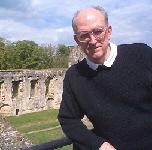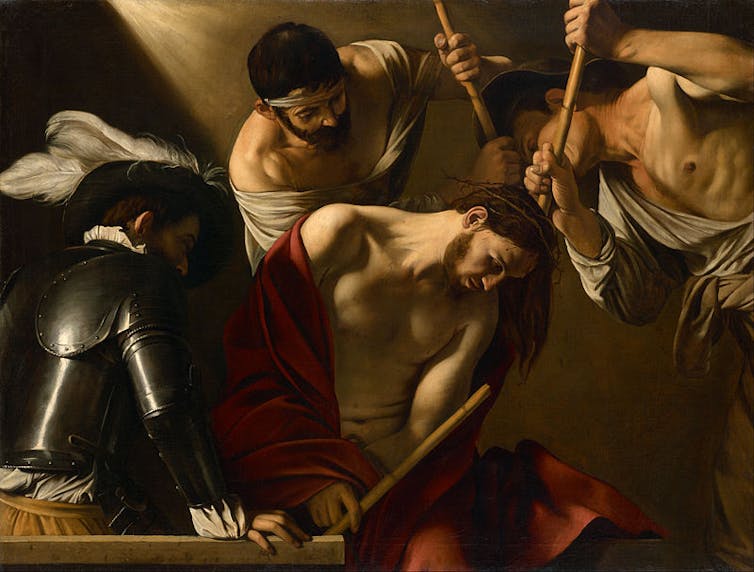Rameau’s modern colors in piano transcriptions
Purists and pedants have problems accepting the great harpsichord music of the past transformed into 88-key piano music. The modern piano, defined by Sebastien Erard in 1821, offered a viable alternative to the harpsichord and related instruments, and audiences have embraced the piano ever since.
Yet even now some players of Bach, Rameau, Scarlatti, Clementi, Purcell and others feel they have to apologize for perverting the composers’ intentions.
The latest to explain why piano versions of harpsichord music are perfectly legitimate is the great Moldavian-born pianist Alexandre Paley, who has just completed his piano recordings of the complete Rameau keyboard oeuvre, “Book One, Suite in A” plus excerpts from his opera “Les Boréades” (La Musica LMU 021).
“When you play Rameau on the piano, you run the risk of being immediately called a Romantic,” Paley writes in his liner notes. But, he adds, the Romantic elements come from the player’s heart, not from the score, irrespective of the instrument.

He is serene about transposition from harpsichord to piano. “It is absolutely necessary to use all the piano’s resources to find new colors,” he writes.
Paley plays Rameau with great authority, contributing his colors from dark to brilliant, and bringing a wonderful clarity to themes and ornamentation. The repeats are fascinating – adding ornaments the second time around. Book One is a collection of sprightly music often inspired by dance. Pieces are titled in kind, the Allemande, the Gigue, the Gavotte, the Menuet.
In our chat by telephone, Paley spoke from his Paris apartment and asserted his belief that Rameau was “the greatest French composer ever. Pure genius and very special colors.” He acknowledges his extensive research into the period of Rameau’s life (1683-1764) in order to recreate the spirit of the time.
Some players struggle to adapt from harpsichord to piano. “They require completely different techniques,” Paley writes. But virtuosos delight in switching back and forth. I once witnessed Rosalyn Tureck onstage at the University of Oxford seated between piano and harpsichord and blithely dashing off Purcell works on one then the other.
As a concert or recital choice, the harpsichord is rarely featured except in programs for Baroque fans. The late English conductor Sir Thomas Beecham is famously quoted as saying he found the crisp but limited sound of the harpsichord like “skeletons copulating on a tin roof.”
An intellectual of serious aspect, Paley was in fine form when we spoke about music in the present tense. Below, excerpts from our talk.
Question. How have you remained optimistic during this long period of lockdown due to the corona virus scare?
Answer. I am in harmony with myself. I never have nothing to do. In fact I don’t have time for depression.
Q. You continue to record CDs and prepare for the resumption of public recitals and concerts.
A. Yes, I work seriously. If God gave me this gift of music performance, it was not for free. I await a return to the concert stage. If I am able to play every night, I don’t need anything else.
Q. You have made Russian music your main specialty. What is the essence of the Russian music you bring to the public?
A. I of course love Russian music because it is part of my roots, but being from that part of the world does not mean it is the only music I love to play. This is a very European/American cliché. When my career started, Bach was said to be my specialty. But yes, I was born with Russian music so it is naturally a part my soul and I always love to play it in concert.
Q. How are you greeted in today’s Russia when you perform there?
A. Every time I play in Russia I always feel extremely welcome. It is a great emotion for me. Wherever I play in Russia, I can feel the importance of classical music and culture. The public is always very knowledgeable about music and listens with great concentration. This does not exist in any other country. I have stage fright in Russia more than anywhere else. There are still people who remember me from my first concerts as a child!
Q. From which of your activities do you draw most satisfaction – recitals, chamber ensembles, concertos, or your festivals?
A. The school from which I graduated, the Tchaikovsky Conservatory, is to me the best in the world and will remain so. We are all raised to become soloists. Chamber music was neglected. I feel the greatest on stage when I am alone, whether in a recital or concerto.
Q. Aren’t young people losing interest in serious music?
A. It seems to me that it is not only in classical music that they are losing interest in but in culture as an entire entity: literature, painting, theater...
---------
Full text of this interview will appear in the forthcoming book Lifting the Lid: 50 interviews with concert pianists, by Frances Wilson and Michael Johnson.
This article is brought to you by the author who owns the copyright to the text.
Should you want to support the author’s creative work you can use the PayPal “Donate” button below.
Your donation is a transaction between you and the author. The proceeds go directly to the author’s PayPal account in full less PayPal’s commission.
Facts & Arts neither receives information about you, nor of your donation, nor does Facts & Arts receive a commission.
Facts & Arts does not pay the author, nor takes paid by the author, for the posting of the author's material on Facts & Arts. Facts & Arts finances its operations by selling advertising space.




















